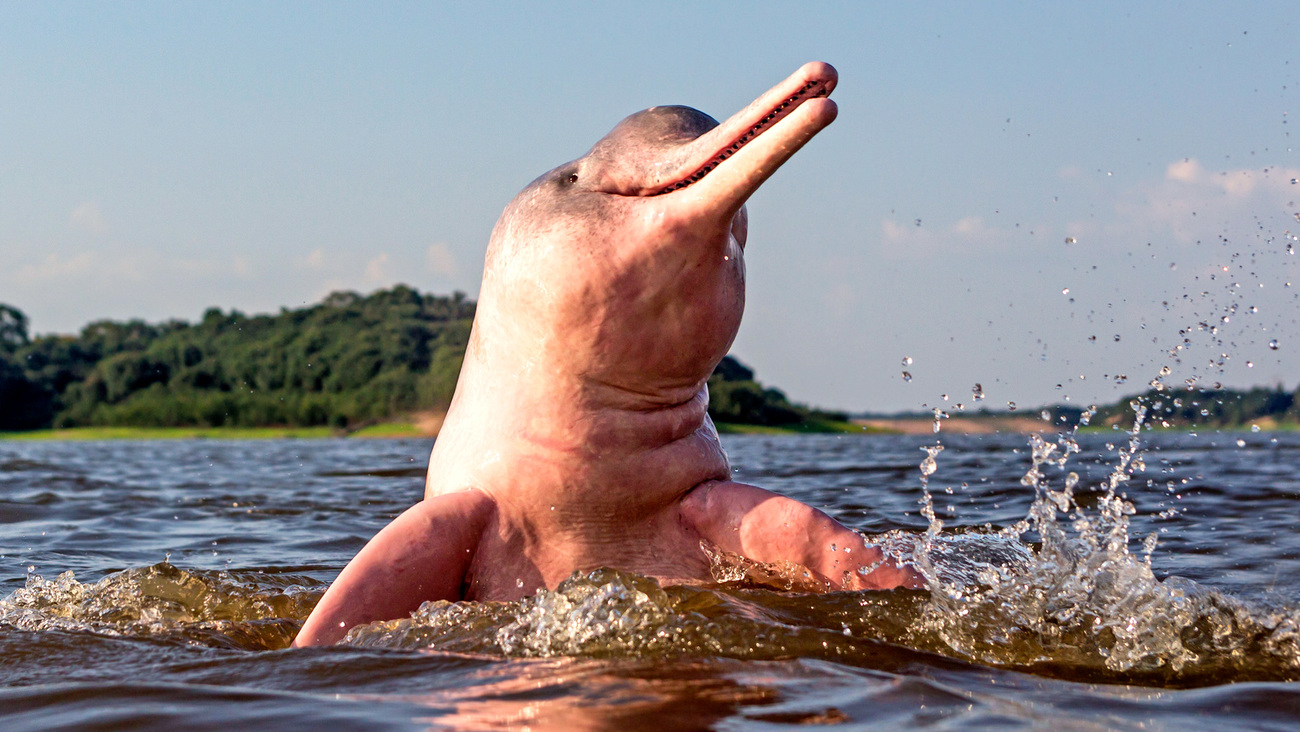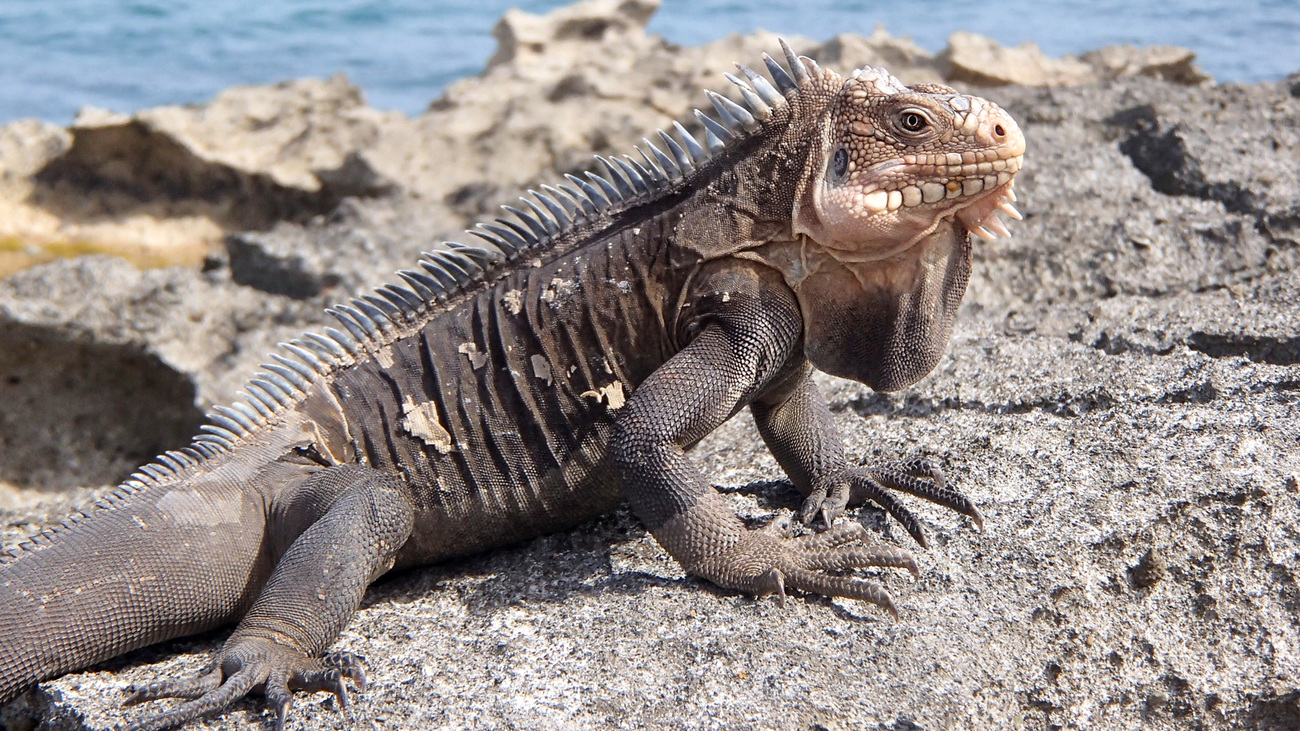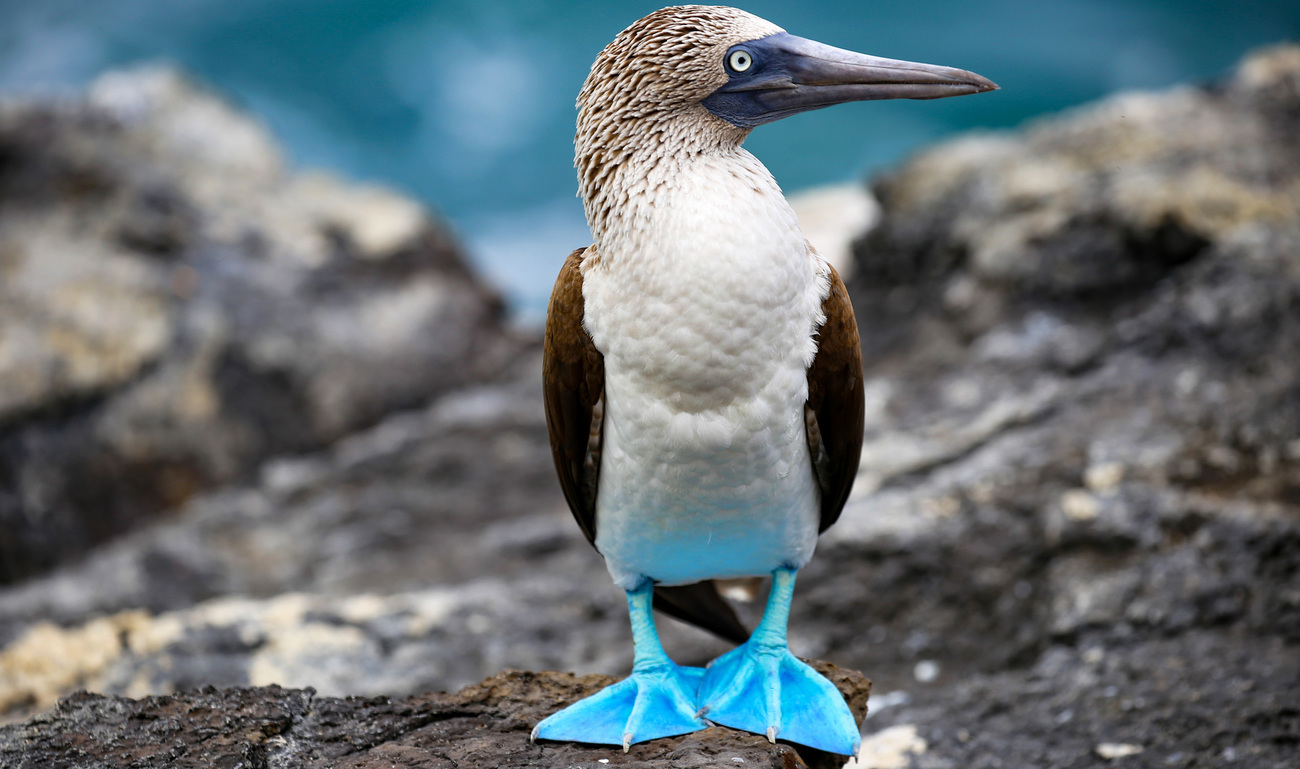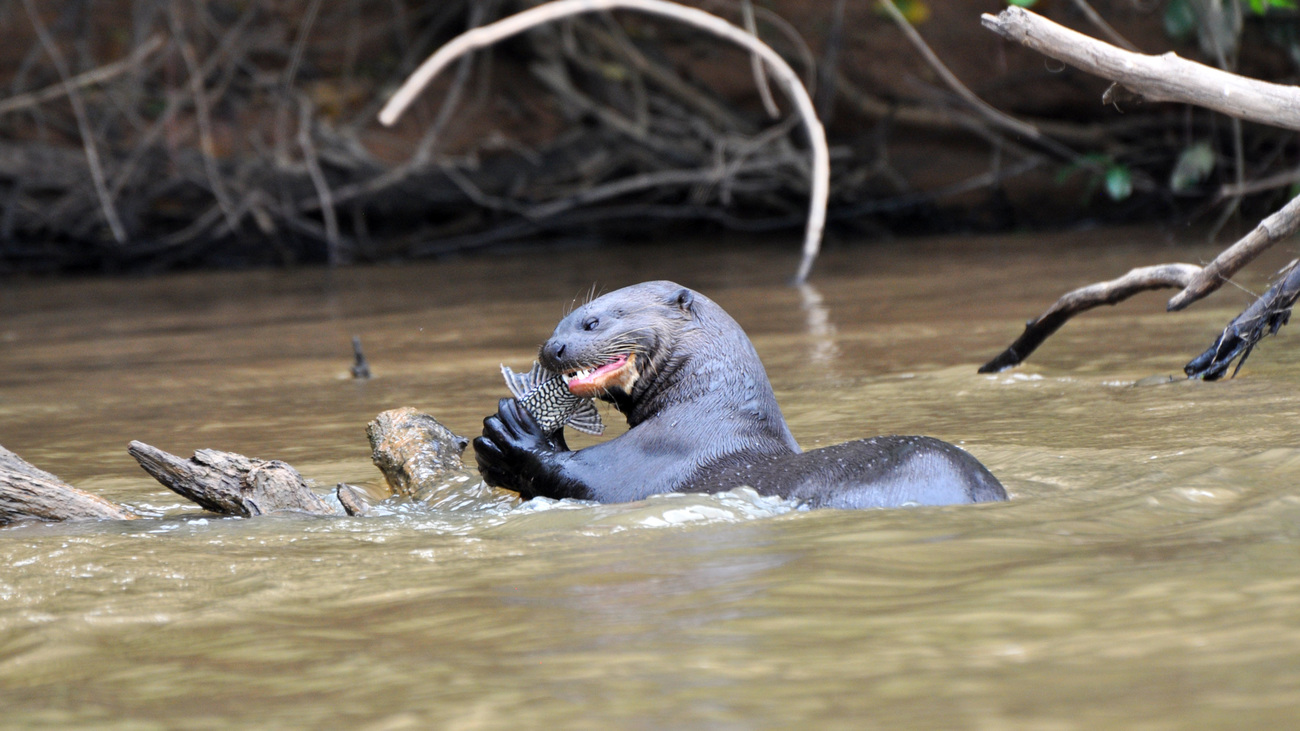16 of the most fascinating animals in South America
16 of the most fascinating animals in South America
South America’s wildlife is particularly rich and well-diversified thanks to the area’s wide range of habitats, from the Amazonian and Chilean forests to the Argentinian Pampas, arid west coast, and high-altitude Andes.
Known as the ‘bird continent’, it is home to over 3,000 bird species—far more than Africa and Asia—including three species of penguins. A variety of freshwater fish, Amazonian fish, mammals, amphibians, and reptiles are also native to the continent. Sadly, though, some of South America’s most fascinating and unique animals are under threat—and their extinction could have wide-reaching ramifications for the continent’s various ecosystems.
At IFAW, we recognise the important role these animals play in maintaining ecological health and, more broadly, the health of our planet. So, much of our work involves protecting, rescuing, and rehabilitating threatened species, combatting the illegal wildlife trade, and supporting the coexistence between humans and wildlife.
We also recently attended COP16 in Cali, Colombia, to promote the idea that wild animals are our allies in the fight against climate change.
Let’s look at some of the most interesting and unique animals native to South America, from pink dolphins to frogs that store tadpoles in their throats, and why they need our help.
1. Capybara

As the largest living rodent in the world, the capybara (Hydrochoerus hydrochaeris) has gained attention for its unique appearance. They can weigh more than 79 kilograms (174 pounds) and grow up to 1.3 metres (4.2 feet) long. Capybaras’ feet are partially webbed, enabling them to be good swimmers. They have also been observed eating their own poop—this is actually healthy for them, as it contains beneficial bacteria that help them digest grass, which makes up the majority of their diet.
Capybaras live in groups, called herds. Since they tend to eat in the afternoon and at night, capybaras need to take naps in the morning. While some members of the herd are sleeping, others stand guard and watch out for predators, which may include jaguars, pumas, and caimans.
Capybaras are listed as least concern on the IUCN Red List. However, they are threatened by the trade of their meat and skin. Capybara leather is highly valued in South America.
2. Jaguar
Perhaps one of the continent’s most iconic animals, the jaguar (Panthera onca) is the largest big cat in the Americas and the only living member of the genus Panthera in the Western Hemisphere. After the tiger and the lion, jaguars are the third largest cat in the world. Interestingly, they are strong swimmers and prefer to live near rivers and lakes, where they hunt fish.
Jaguars typically are a light brown to golden yellow colour with black spots, but they can be born melanistic—meaning their fur is all black. Melanistic jaguars are known as black panthers (and so are melanistic leopards of Asia and Africa).
The jaguar is listed as near threatened on the IUCN Red List. These cats are unfortunately killed for trophies and for the illegal trade in their parts, as well as by farmers who fear they will prey on their livestock. Deforestation also degrades the jaguar’s habitat.
IFAW is committed to helping jaguars in South America. We work with NGOs, communities, and all levels of government to advance conservation efforts supporting jaguars like Covi in Mexico and have helped mitigate conflict between people and jaguars with our Casitas Azules project.
Internationally, we’ve played a pivotal role in anti-trafficking initiatives, such as Operation Jaguar, training law enforcement and improving legislation to curb the illegal trade in jaguars and their body parts. We also collaborate with global organisations like CITES and the Convention on Migratory Species to enhance protections for jaguar habitats and migration corridors, ensuring a sustainable future for this iconic species.
3. Amazon river dolphin

Also known as the pink river dolphin, boto, or bufeo, the Amazon river dolphin (Inia geoffrensis) is an endangered marine mammal that is known for its pink colour, which is especially prominent in adult males. Like other toothed whales, Amazon river dolphins have an organ called a melon, which they use for echolocation. It’s the largest species of river dolphin in the world—they can grow up to 2.7 metres (9 feet) long.
Not present in young dolphins, which are grey, the pink colour of their skin varies between individuals. It is thought to be a result of scar tissue, though their diet and other factors may also play a role. They are known for eating catfish and piranhas in addition to many other aquatic species.
Recently, a mass die-off of Amazon river dolphins and Tucuxi river dolphins occurred in Lake Tefé due to unusually low water levels and extremely high temperatures. IFAW’s Marine Mammal Rescue team assisted local organisations in training rescue workers to care for stranded dolphins.
4. Kodkod
Also known as the guiña, the kodkod (Leopardus guigna) is a much smaller cat than their jaguar relatives—in fact, they are the smallest felines in the Western Hemisphere. Kodkods are darker brown than leopards, though they have similar spots and can also be born with melanism. Kodkods are found primarily in central to southern Chile, extending into southwestern Argentina. They weigh only two to three kilograms (four to seven pounds) and are 39 to 51 centimetres (15 to 20 inches) long.
Kodkods are great climbers and spend a lot of time in trees. Sadly, deforestation in Chile’s rainforest is threatening their survival, and they are now listed as vulnerable on the IUCN Red List. Every end of their range is either being converted into agricultural land or pine plantations; reclaimed for farming, grazing, and raising domestic animals; or cut down for logging.
5. Marine iguana

The marine iguana (Amblyrhynchus cristatus) is a species found only on the Galápagos Islands. Also known as the sea iguana, saltwater iguana, or Galápagos marine iguana, this large reptile forages underwater and eats algae. They’re the only living lizards that inhabit a marine environment. After swimming, they can be seen basking on the rocks. Like other species native to the Galápagos, there are multiple recognised subspecies of the marine iguana, which vary between the different islands.
The marine iguana is listed as vulnerable on the IUCN Red List, and one of its major threats is the occurrence of El Niño events. El Niño is a climatic event in the Pacific Ocean that weakens upwelling, the process of colder, nutrient-rich water moving to the surface. This causes fewer phytoplankton to populate the area, which in turn affects the entire marine ecosystem. Studies suggest that climate change is increasing the frequency and variability of El Niño events.
For marine iguanas, El Niño increases the presence of brown algae, which is not easily digestible and may be toxic to this species. Food shortages cause the unusual phenomenon of these iguanas’ bodies shrinking—they begin absorbing their own bone matter.
6. Maned wolf
The maned wolf (Chrysocyon brachyurus) is not a wolf, despite its name, and not a fox, despite its bright red-orange colour—instead, it’s the only member of the genus Chrysocyon. It’s the largest canine in South America, at about 90 centimetres (three feet) tall and weighing 23 kilograms (50 pounds). The maned wolf is crepuscular, meaning it’s active at twilight, and eats an omnivorous diet consisting of various plants, small animals, and insects.
Rather than howling, maned wolves bark or roar to communicate with their mates and warn others to stay away. They also mark their territories with urine. They live in monogamous pairs rather than packs, with each pair claiming a territory of about 26 square kilometres (10 square miles).
The maned wolf is listed as near threatened on the IUCN Red List. Sadly, these wolves face several challenges across their range, primarily due to human activities. Habitat loss and fragmentation, often caused by converting forests to farmland and pasture, leave maned wolves with fewer safe places to live and force them to cross busy roads, where many are killed. Conflicts with humans also arise, as these wolves are sometimes blamed for livestock losses and persecuted due to superstitions or cultural beliefs. Domestic dogs add to the problem by spreading diseases, competing for habitat, and even attacking maned wolves.
In some areas, illegal trade, hunting, and trapping further threaten these animals, with pups sometimes taken for private collections or zoos. These pressures are especially harmful to small, isolated populations, and without action, could lead to further declines in local numbers.
7. Spectacled bear
The spectacled bear (Tremarctos ornatus) is the only bear native to South America. It’s also known as the South American bear, Andean bear, Andean short-faced bear, mountain bear, jukumari, ukumari, or ukuku. It’s the last remaining bear in the subfamily Tremarctinae—the short-faced bears. The spectacled bear generally has black fur save for its large, spectacle-shaped markings around its face.
Spectacled bears’ range is mostly restricted to the Andes Mountains. One fun fact about spectacled bears is that the fictional character Paddington Bear is a spectacled bear from Peru.
The spectacled bear is listed as vulnerable, and it is threatened by habitat loss, retaliatory killings, and climate change. Over centuries, human activity—including agriculture, mining, and land conversion—has altered 90% of the Andes, reducing bear habitats and fragmenting landscapes. Illegal killing is another major issue for spectacled bears—often, they are killed in retaliation for livestock losses or crop damage, or due to cultural beliefs.
The tropical Andes are among the regions most vulnerable to climate change’s effects, which only adds to these pressures by shrinking suitable habitats, especially at high altitudes, and increasing human-wildlife conflicts as bears are forced to adapt and may seek food or shelter closer to communities.
8. Harpy eagle

The harpy eagle (Harpia harpyja) is considered the strongest eagle on the planet. They are also the largest eagles, with talons the size of grizzly bear claws. The harpy eagle is the national bird of Panama, and they soar through South America’s rainforests. Their huge talons enable these birds of prey to pick up prey weighing more than 15 pounds—up to their own body weight—including tree-dwelling mammals like sloths and monkeys.
Harpy eagles can be recognised by their grey, black, and white feathers, in addition to their bright yellow feet. Their legs have primarily white feathers with thin black stripes.
Sadly, the harpy eagle is rapidly declining and considered vulnerable due to human actions. There is a widespread belief that harpy eagles pose major threats to livestock and human lives. It very rarely preys on livestock and does not prey on humans at all—however, the bird is frequently targeted by hunters due to these misconceptions.
On top of this, harpy eagles face significant threats from habitat loss and human activities. Deforestation for agriculture, logging, and infrastructure projects is rapidly shrinking their forest homes, especially in Southeast Amazonia and Central America. Many of the large trees they use for nesting are targeted for timber, leaving fewer safe places to raise their young. Powerline collisions are another hazard. Climate change may shrink the harpy eagle’s range even further by 2090.
9. Terciopelo (fer-de-lance)
Also known as the fer-de-lance, the terciopelo (Bothrops asper) is a species of pit viper found in Mexico, Central America, and northern South America (in Colombia, Ecuador, and Venezuela, including in the Andes). It is known as the ‘ultimate pit viper’ due to its highly venomous nature, large size—with females growing up to 2.5 metres (8 feet) long—and fearsome reputation.
It’s responsible for the most snakebites in its range, but this is due to people living close to its habitat. The terciopelo tries to avoid contact with humans when possible, but if disturbed, it is highly defensive and may strike.
The terciopelo can be recognised by its brown, zig zag-shaped markings. As a pit viper, the terciopelo possesses the pit organ, which allows it to ‘see’ heat—making it easy to spot its prey. The terciopelo is listed as least concern on the IUCN Red List and, luckily, faces no known threats.
10. Wild llama (guanaco)
The guanaco (Lama guanicoe) is the wild counterpart of the domesticated llama. It’s one of South America’s largest land mammals, standing 90 to 130 centimetres (three to four feet) tall. They are members of the camel family and are also closely related to alpacas and vicuñas (alpacas’ wild counterparts).
Modern-day domesticated llamas are the descendants of guanacos that were domesticated by humans 6,000 to 7,000 years ago. They have thick, woolly coats, which is one of the reasons why people domesticated them. They also have thick eyelashes, which help protect their eyes from dust and dirt in their shrubland and grassland habitats.
The guanaco is classed as least concern. However, overhunting, habitat degradation due to livestock overgrazing, and competition with other species for food threaten their decline.
11. Blue-footed booby

Native to the western coast of the Americas from Mexico to Peru, the blue-footed booby (Sula nebouxii) is a marine bird recognised by its bright sky-blue webbed feet.
How do their feet turn this colour? Through their diet, they ingest carotenoid pigments, which become concentrated in their feet. These pigments act as antioxidants and immune system stimulants in addition to giving the birds their unique appearance. However, when the pigments are used by the birds’ feet, they cease to provide any immune system benefits.
The reason blue feet have survived as a trait in this species is because they seem to make males more attractive to females during courtship. Over time, female blue-footed boobies have adapted to recognise blue feet as a sign of good health—likely because it signals a carotenoid-filled diet.
The blue-footed booby is classed as least concern as it has a large range and population. However, the population inhabiting the Galápagos Islands is suffering a food shortage. These birds feed on clupeid fish, which are declining in this area. As a result, blue-footed boobies have started to defer breeding, causing an ongoing population decline, which could—should this trend continue—cause a massive population crash.
12. Darwin’s frog
Named after the scientist who discovered the species, Darwin’s frog (Rhinoderma darwinii), also called Southern Darwin’s frog, is a small frog species recognisable by its bright green back and its elongated snout, which gives its head a triangular shape. This frog is native to the austral forest of Chile and Argentina.
Darwin’s frog has an unusual reproductive method. The female frog lays the eggs, but the male frog broods the tadpoles inside its vocal sac. When they have completed their metamorphosis, the young frogs hop out of their father’s mouth. This species is the only known amphibian to do so.
Classed as endangered, Darwin’s frog faces threats to its survival. In the northern part of its range, pine forestry and drought pose a danger. In the southern part, the frogs are impacted by clear-cutting and the replacement of native trees with plantations. A disease known as the chytrid fungus has also been linked to individual deaths, subpopulation declines, and even potential local extinctions.
13. Paradoxical frog
A species with a name like the paradoxical frog (Pseudis paradoxa) surely stands out from the rest. Also known as the shrinking frog, this frog begins as a very large tadpole before undergoing metamorphosis, after which it becomes a much smaller adult frog—only about a quarter to a third of its former size. The tadpoles can reach about 220 milimetres (almost nine inches) in length, while the fully grown—or fully shrunken—adults are about 45 to 65 millimetres (two to three inches) long.
Found in and around bodies of water throughout forest, savannah, and grassland ecosystems, the paradoxical frog is classed as least concern. However, agricultural activities and human settlements pose threats to the future of South America’s amphibians.
14. Giant river otter

It’s not surprising that the giant river otter (Pteronura brasiliensis) is sometimes called the river wolf because of its size and carnivorous nature. It is the largest member of its family, making it the largest otter in the world. Though it mainly preys on fish and crustaceans, it can successfully catch caimans and small anacondas. Giant river otters compete with jaguars in the food chain—they’re not the cute and cuddly creatures you might be imagining.
Sadly, these giant otters are listed as endangered on the IUCN Red List. They were hunted to near extinction in the 1960s for their skin, but today their main threats are habitat destruction, overfishing, water contamination, disease spread by domestic animals, and mismanaged tourism.
Direct conflict between humans and otters is also an increasing problem. Otters may be killed for fun, out of fear, or because they are seen as competitors for fish by loggers, miners, and fishermen, who often blame them for depleting fish resources used for local and commercial consumption.
15. Banded penguin
Banded penguins (the genus Spheniscus) are sometimes called ‘jack-ass penguins’ due to the loud, donkey-like sound they make. These vocalisations are used to identify individuals and locate mates. Banded penguins are recognised by their banded black and white plumage.
Three of the four banded penguin species inhabit South America—the Magellanic penguin (Spheniscus magellanicus), which lives on the Falkland Islands and along the southern coasts of the continent, as far north as São Paulo, Brazil; the Humboldt penguin (Spheniscus humboldti), which lives further north, along the coasts of Peru and Chile; and the Galápagos penguin (Spheniscus mendiculus), which lives around the Galápagos Islands. The Magellanic penguin is the largest of the three, and the Galápagos penguin is the smallest—and the furthest north of all penguins.
While the Magellanic penguin is listed as least concern, the Humboldt penguin is vulnerable, and the Galápagos penguin is endangered. The latter is threatened by El Niño events which have affected the availability of prey fish in the Galápagos. As disasters increase in frequency and severity, these penguins could become less resilient to other threats, like disease outbreaks, oil spills, and predation by non-native predators, like rats, cats, and dogs.
16. Hyacinth macaw
The largest flying parrot in the world is the Hyacinth macaw (Anodorhynchus hyacinthinus), which is native to Brazil and Paraguay. This bird is recognised by its vibrant blue plumage and the bright yellow rings around its eyes and feathers at the corner of its beak. They are about 95 to 100 centimetres (37.5-39.5 inches) long with a four-foot wingspan.
Hyacinth macaws are highly social and live in flocks of 10 to 30 birds. They mate for life and can live up to 60 years in the wild.
Sadly, hyacinth macaw populations are declining, and they are considered vulnerable. In the 1980s, at least 10,000 hyacinth macaws were taken from the wild for illegal trade, which still continues today. They also face habitat loss due to deforestation for cattle ranching, hydroelectric power schemes, and exotic tree plantations.
Protecting South America’s most fascinating animals
IFAW supports conservation efforts in South America to help protect its most vulnerable wildlife. Some of our efforts include protecting endangered animals like giant anteaters, songbirds, and Amazon river dolphins, as well as combating the illegal wildlife trade. IFAW recently conducted a study into wildlife trafficking in Hispanic America, finding that illegal trade is a major contributor to the decline of some species in the region and is driving some to extinction.
In 2020, fires burned through 30% of Brazil’s Pantanal region, the world’s largest tropical wetland, killing millions of animals. IFAW supported our partner Tamanduá Institute in their Orphans of Fire project, dedicated to the rescue and rehabilitation of giant anteaters impacted by this disaster.
We are working to help stop the over-trapping and illegal trading of neotropical songbirds in Guyana, Suriname, and Venezuela. Focusing on conservation, animal welfare, cultural heritage, and public health, our research here will inform policymakers and stakeholders, helping them make the best decisions to protect these precious birds for future generations.
We’ve also worked to prevent the illegal trade of wildlife in South America more widely. We partnered with Jakarta Animal Aid Network (JAAN), the Jane Goodall Institute (JGI), and Legal Atlas to help train over 200 officers on evidence management, animal handling, and biosafety so they can confiscate illegally trafficked animals and treat them humanely while in custody. We also provided actionable and sustainable solutions to improve laws and regulations for the benefit of frontline officers and the animals they encounter. We’ve supported the successful rehabilitation and release of captured jaguars back into the wild, too.
In addition, with the support of the Convention on International Trade in Endangered Species of Wild Fauna and Flora (CITES), we’re campaigning for a political declaration—to be endorsed by all South American countries—that would make fighting wildlife trafficking a regional political priority.
Our team isn’t just working on the land, either. For 10 years, we successfully campaigned for sharks to gain protection under CITES. Today, we continue to train front-line enforcers throughout South and Central America in shark species identification, to aid law enforcement in catching illegal shipments of shark products.
Want to help protect these species and other animals around the world?
Related content
Our work can’t get done without you. Please give what you can to help animals thrive.